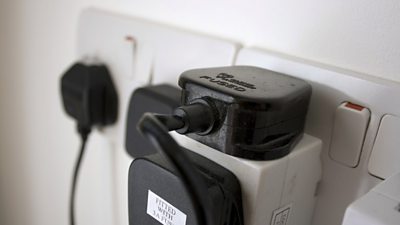This Safety Guideline gives general guidance on use of electricity and electrical equipment when working in 91�ȱ� Premises. Further information on a range of electrical subjects is available on the links page. It does not cover installing or maintaining fixed electrical systems.
e-bikes and e-scooters are not permitted inside any 91�ȱ� building. Please see note below under 'Division Specific Issues' for a further explanation.
What Can Go Wrong?
Electricity can kill or severely injure people and cause damage to property by fire. Effects include:
- Fires if electrical equipment (including wiring) if it develops a fault
- Contact with electricity caused by damaged equipment can cause electrical shock and/or burns
- Faults with mains electrical systems can develop a tremendous amount of energy in a short time - so much so that it actually causes explosions
- Electrical protection devices can be rendered useless by long cables or the wrong equipment
- Using electrical equipment in higher risk environments: wet, damp, humid, dusty conditions, increases the hazards significantly
- Fires and burns from contact with hot surfaces
- Batteries can start and sustain fires if the terminals are shorted together
Legal/91�ȱ� Requirements
Electricity at Work Regulations 1989 state that you must not allow work on or near exposed, live parts of equipment unless it is absolutely unavoidable and suitable precautions have been taken to prevent injury, both to the workers and to anyone else who may be in the area. It also requires that electrical systems and equipment is maintained in a safe state. The 91�ȱ� requires electrical equipment to be inspected and tested in accordance with the guidance detailed in 91�ȱ� Safety of electrical equipment.
You must disconnect electrical equipment (not just turn it off) if you believe there is a fault.
Control Measures
- Fixed electrical systems in 91�ȱ� buildings are installed, inspected and maintained by competent contractors through the facilities management supply chain. If you suspect any problems report this to your local FM immediately and keep people away. Only try and isolate equipment if it is safe to do so. If in doubt, leave alone.
- FM contractors need to ensure that agreed timescales are in place for periodic inspection and testing
- Personal and contributors (including freelancers) equipment should also be checked. See the page on Bringing your own equipment or contact your local FM team to arrange testing.
- Electrical equipment is designed to be electrically safe when new but can become dangerous if damaged or incorrectly maintained, so it is a requirement that equipment is checked regularly
- Most electrical equipment used in 91�ȱ� buildings is covered by periodic inspection and testing routine (i.e. ‘PAT testing). This requires periodic checks to ensure electrical items, their supply plugs and leads have not become worn or damaged to allow contact with hazardous voltages. Items such as extension leads are particularly liable to damage to their plugs sockets connections and the cable itself.
- There are simple checks which everyone should do to help make sure their equipment is safe. Look out for:
- damage to the lead including fraying, cuts or heavy scuffing, e.g. from floor box covers;
- damage to the plug, e.g. to the cover or bent pins;
- tape applied to the lead to join leads together;
- coloured wires visible where the lead joins the plug (the cable is not being gripped where it enters the plug);
- damage to the outer cover of the equipment itself, including loose parts or screws;
- signs of overheating, such as burn marks or staining on the plug, lead or piece of equipment; Or equipment that just feels unusually hot.
- equipment that has been used or stored in unsuitable conditions, such as wet or dusty environments or where water spills are possible; and
- cables trapped under furniture or in floor boxes.
- Remove damaged or defective equipment from use and arrange to get it repaired or replaced
- Don't undertake even simple repairs yourself (even replacing a mains plug). Your department may have specific arrangements for the repair and maintenance of electrical equipment, if not contact the IT team or your local Facilities Team.
- For temporary electrical systems in studios or on location, see the page on Temporary Electrical Systems
Division Specific Issues
91�ȱ� Workplace is responsible for inspection and test for the fixed electrical supply and infrastructure in 91�ȱ� buildings. Each division/department is responsible for its own electrical and IT equipment and has systems in place to ensure that appropriate checks are in place. The facilities management teams can arrange for the inspection and testing (Portable Appliance Tests) of equipment that you plug into the building supply.
Lithium-Ion Battery Charging & Storage (e-bikes and e-scooters)
The storage and charging of personal e-bikes and e-scooters is not permitted inside any 91�ȱ� building. Storage and charging is only allowed via designated fire-safe areas such as secure external bike storage areas. Workplace are continuing to assess across the 91�ȱ� estate to identify where further provisions for charging points can be made.
NOTE: Mobility scooters provided for disabled staff are permitted inside 91�ȱ� buildings. The chargers for these have been tested and approved and are plugged into specific charging points that can be isolated. These have been provided for that single purpose only, not for general use.
Responsibilities of Engineering departments
Where there is doubt or concern, then the technical production team can call upon an Engineer to assess the equipment for electrical safety and provide advice as to whether it is fit for use.
Non-91�ȱ� Equipment including personal equipment and musical instruments
Performers, make-up artists, musicians or similar have the same duties to ensure their electrical appliances are safe to use. It should have evidence of portable appliance testing such as a PAT label. For more information see the page on Bringing your own equipment.
Key points:
- Check that equipment from foreign suppliers is safe to use on UK supplies and voltages.
- All equipment should be supplied via an RCD or, where not possible, a safety isolating transformer under the control of an electrically skilled person.
- If equipment is, or is suspected to be unsafe, it should not be used.
Electrical Safety Guidance Notes (EGNs)
The 91�ȱ� has previously published a series of electrical safety guidance notes. These are too technical to be of use to the majority of 91�ȱ� users and have been withdrawn from this site. They are held in on an archive on the 91�ȱ� Safety Teamsite, if you have a specific need to consult these then please contact 91�ȱ� Safety. However, you should note that there is no mechanism to keep these updated or reviewed.
FAQs/Did You Know?
- Excessively long extension leads (particularly those daisy-chained together) can stop safety devices such as circuit breakers and fuses from working.
- Around 95% of electrical faults or damage can be found just by looking (visual inspection).
- Battery powered appliances reduce the risks associated with electricity significantly, but don’t remove them completely.
- Although the risk of electric shock from battery powered devices is generally low, batteries (particularly modern lithium ones) can store a lot of energy. When the terminals are shorted, the battery damaged or disposed of inappropriately or charged badly, that energy can start and sustain fires, even without oxygen. Typical fire extinguishers may not provide any help, other than to stop the fire spreading.
- The 91�ȱ� has revised it guidance for checking portable electrical appliances – see separate guidance.
Recommended links
-
Certificate in Temporary Electrical Systems Electrical safety training course designed to ensure those working with electricity in temporary distribution systems on productions can comply with BS 7909
91�ȱ� electrical safety topics
-

Electrical safety homepage
A selection of guidance documents and general advice in relation to Electrical Safety in 91�ȱ� premises, on productions and events. -

91�ȱ� policies for electrical safety
91�ȱ� policies detailing its overarching approach to the management of electrical safety. -

91�ȱ� electrical safety guidance documents
Summary of 91�ȱ� electrical guidance (links within document titles) -
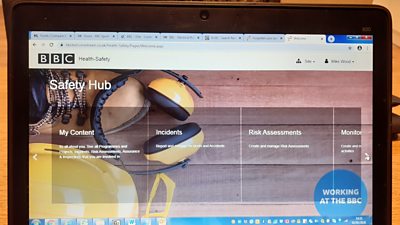
Electrical risk assessments and reporting of incidents
This section will help those who need to do a risk assessment where electricity is being used. It also gives guidance on reporting requirements for any electrically-related incident. -

Electrical safety in 91�ȱ� Premises
General guidance on use of electricity and electrical equipment when working in 91�ȱ� Premises. -

Electrical safety in Studios
A straightforward guide to electrical safety management in studios and similar locations. -

Safety of electrical equipment and appliances
Requirements for electrical safety of electrical equipment and appliances (‘PAT testing’). -
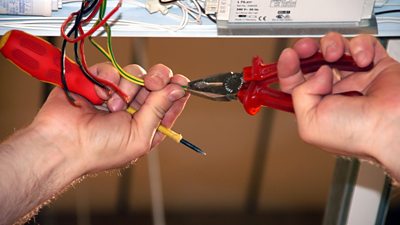
Electrical competency and Part P requirements
Guidance on what to look for when employing contractors or freelancers to do electrical work. -
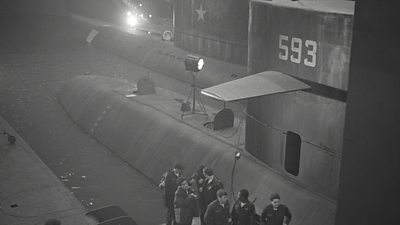
Electrical safety requirements for Production Managers
Find out what you should know and what measures should be put in place for your production. -

Bringing your own equipment to work and contributor’s equipment
Basic guidance on the safe and appropriate use of personal electrical equipment whilst at work and requirements. -
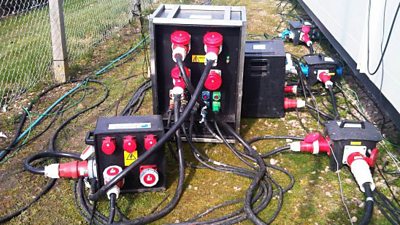
Temporary electrical systems and BS 7909
Requirements for electrical safety management in accordance with BS 7909 for all temporary electrical systems. -
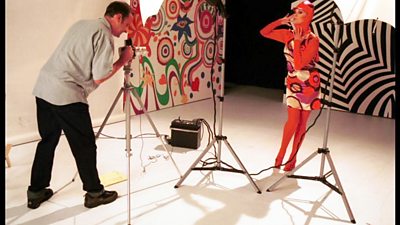
Small and Simple Temporary Electrical Systems
Guidance to help understand the requirements for simple temporary electrical systems such as interviews or photo shoots for example. -
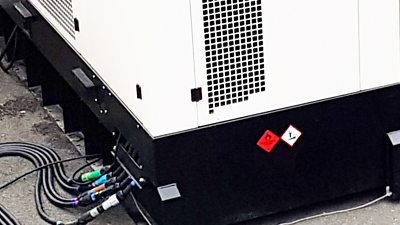
Generators
Guidance on the use of temporary generators including the application of earth electrodes. -
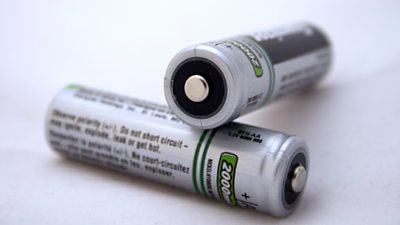
Batteries
Guidance on the safe use and storage of batteries. -
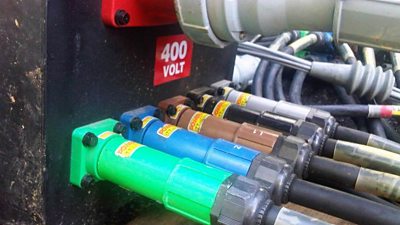
Certificate in Temporary Electrical Systems
An electrical safety training course designed to ensure those working with electricity in temporary distribution systems on productions can comply with BS 7909 and the relevant parts of BS 7671. -
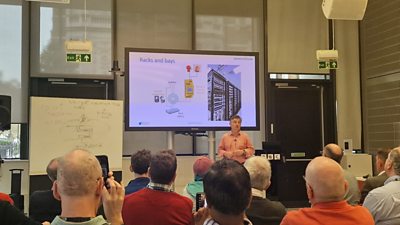 Electrical Principles Workshop to harmonise the approach to health and safety management on electricity across all areas.
Electrical Principles Workshop to harmonise the approach to health and safety management on electricity across all areas. -

External information and guidance on electrical safety
Links providing further information on all aspects of electrical safety, from external bodies (IET, HSE, Etc.) that 91�ȱ� staff may find useful. Some guidance is required to be purchased. -

Health & safety Alerts and News
All the Health & Safety Alerts and News from the H&S Teams
More from SSR
-
Your platform to record accidents, risk assessments, assurance monitoring and inspections
-
Safety Equipment Stores
Just one number to call: 020 3614 5155 -
91�ȱ� Safety Guidelines
An A-Z of 91�ȱ�'s Health and Safety Guidelines -
Safety Advice Line: 0370 411 0464 Email: safety@bbc.co.uk
Events guidance - key links:
- Exhibitions
- General Guidance
- Indoor Location Recce Checklist
- Outdoor Location Recce Checklist
- Major Incidents & Emergency Planning
- Marketing and Promotional
- Noise Exposure
- Planning and Management
- Responsibilities
- Responsibilities Form
- Laser Lighting Effects
- Strobe Lighting
- Temporary Stages and Rostra
Health topics - key links:
- (91�ȱ� network only)
- Contributors Fitness to Participate
- Display Screen Equipment (DSE)
- (91�ȱ� network only)
- First Aid and Welfare on Location
- International Travel - Risks & Health
- Manual Handling
- Mental Health: 91�ȱ�page
- (91�ȱ� network only)
- Personal Health and Wellbeing
- Pregnancy
- Psychological Trauma Support & Trauma Risk Management (TRiM)
- Tiredness and Fatigue
- Travel Health Contacts
91�ȱ� High Risk - key links:
- CBRN and Industrial Spills
- Covert Filming
- Crisis Management and Security Support
- Demonstrations, Protests and Crowds
- Disaster Coverage
- Door Stepping
- (91�ȱ� network only)
- (91�ȱ� network only)
- Public Order
- Safety Equipment Stores
91�ȱ� Journalism - key links:
91�ȱ� Productions - key links:
- Aerial Filming and Airfields
- Animals: Displaying and handling for performance
- Boats: Working on
- Children and Young People
- Driving
- Electrical Equipment and Systems
- First Aid and Welfare on Location
- Food Safety (Cooking and Catering)
- Remote Location Working
- Roads and Streets: Working by
- Security of Productions on Location
- Stunts
- Tiredness and Fatigue
- Unmanned Aerial Systems (UAS aka Drones)
- Vehicles: Recording in, from and around
- Working at Height: Mobile Elevating Work Platforms
- Working at Height: Tower Scaffolds
91�ȱ� Radio - key links:
- (91�ȱ� Network only)
91�ȱ� Security - key links:
91�ȱ� Sport - key links:
About this site
This site describes what the 91�ȱ� does in relation to managing its health, safety and security risks and is intended for those who work directly for the 91�ȱ�.
It is not intended to provide instruction or guidance on how third parties should manage their risks. The 91�ȱ� cannot be held liable for how this information is interpreted or used by third parties, nor provide any assurance that adopting it would provide any measure of legal compliance. More information
Some links on this site are only accessible when connected to the 91�ȱ� network
